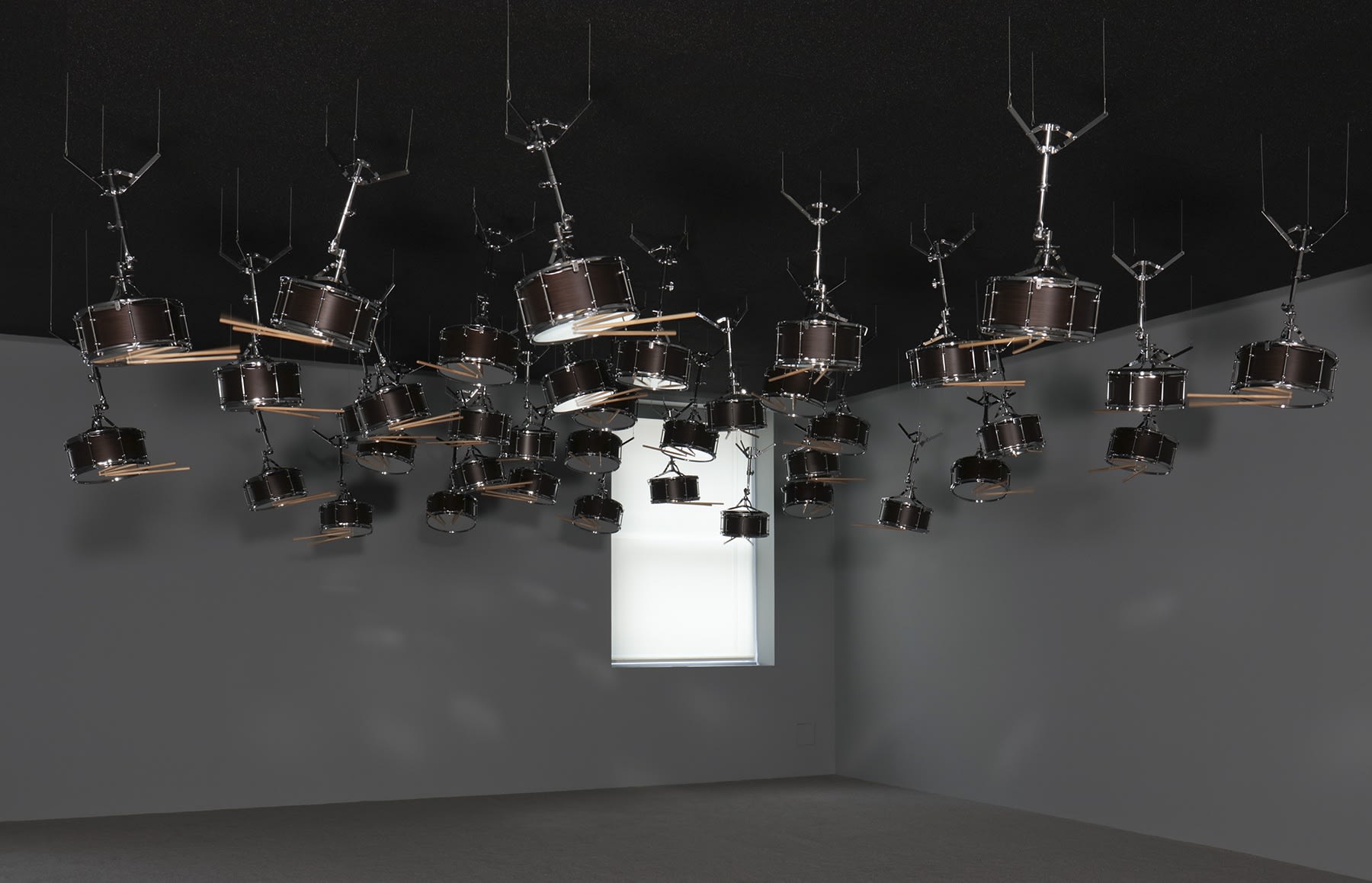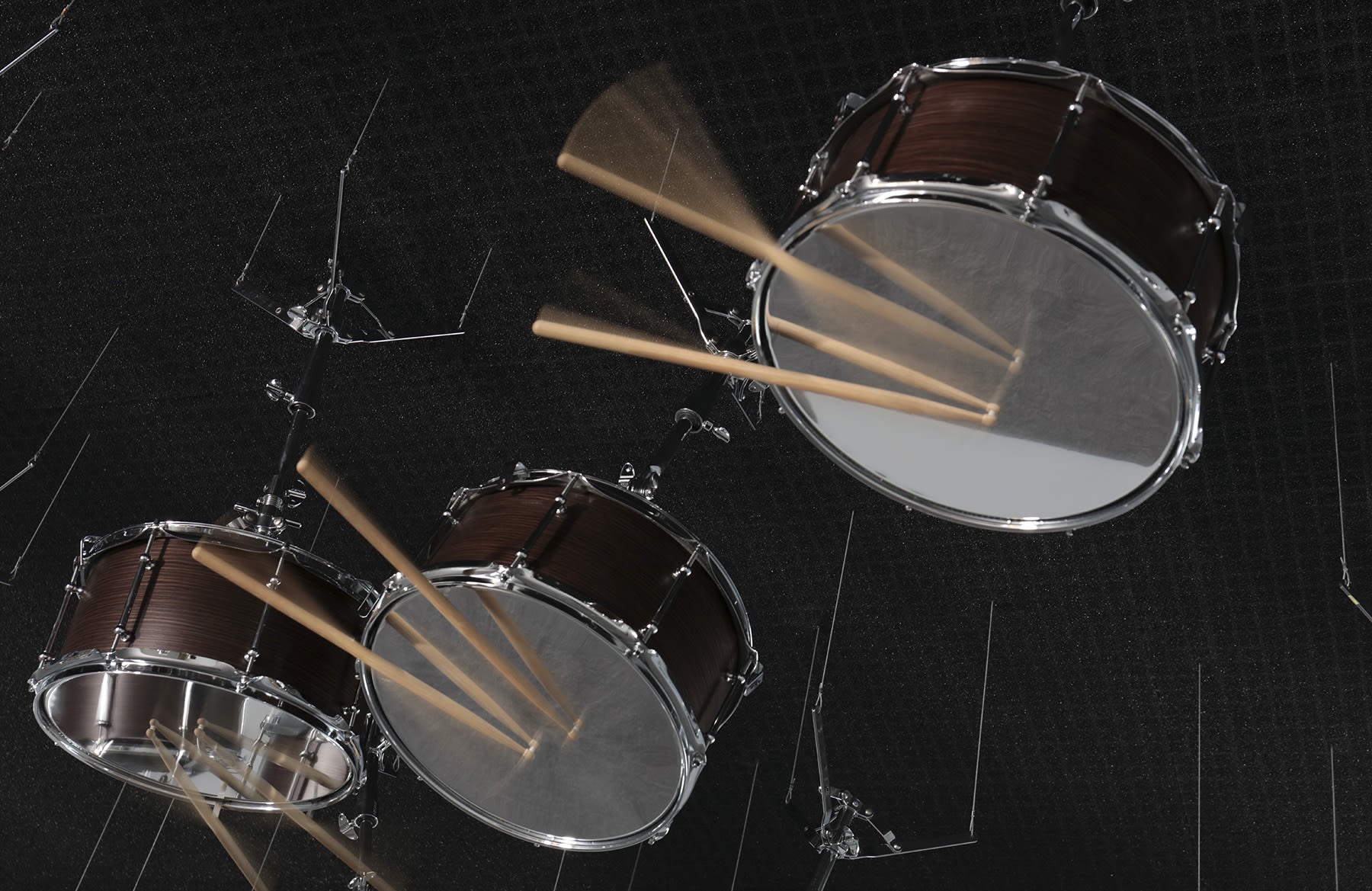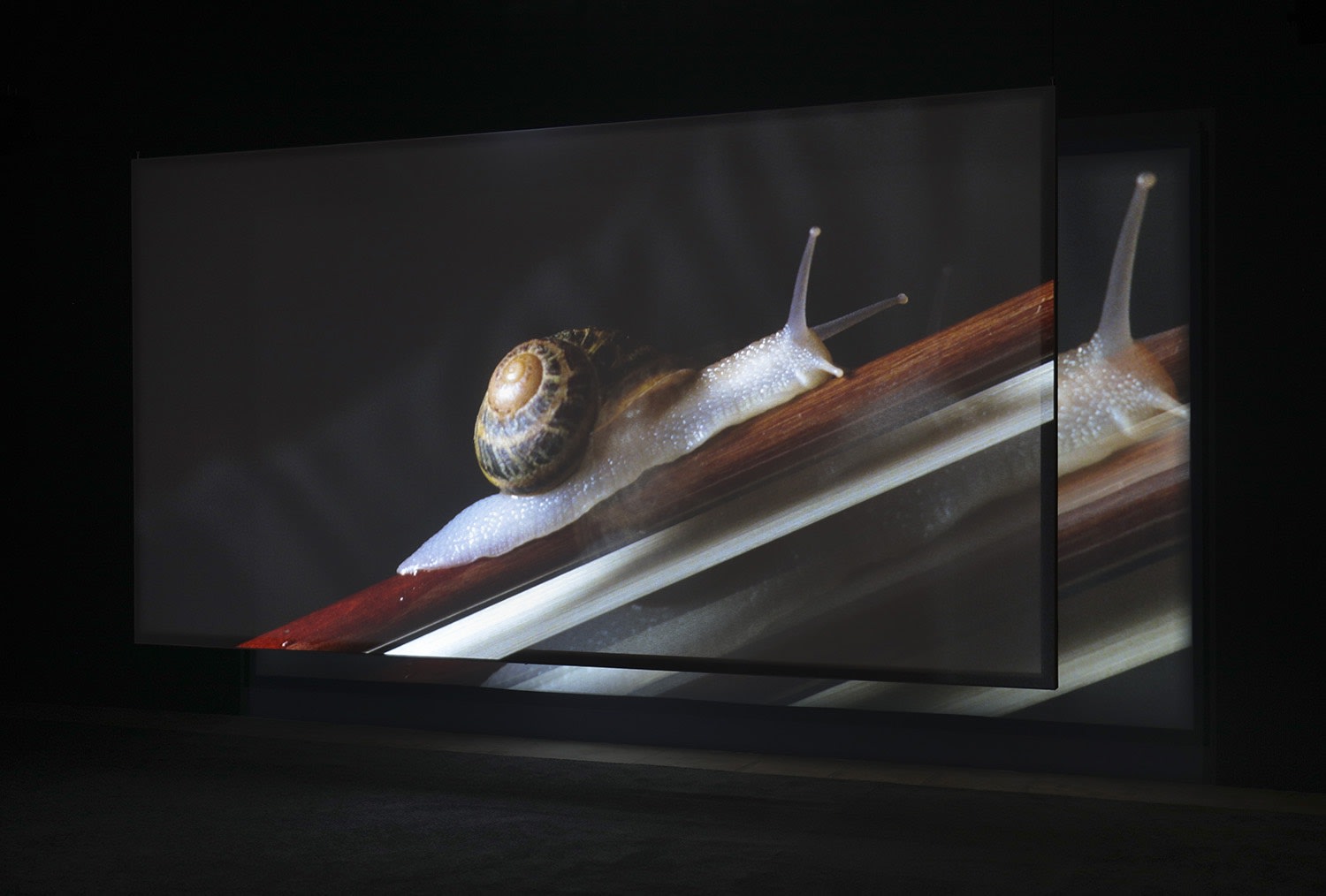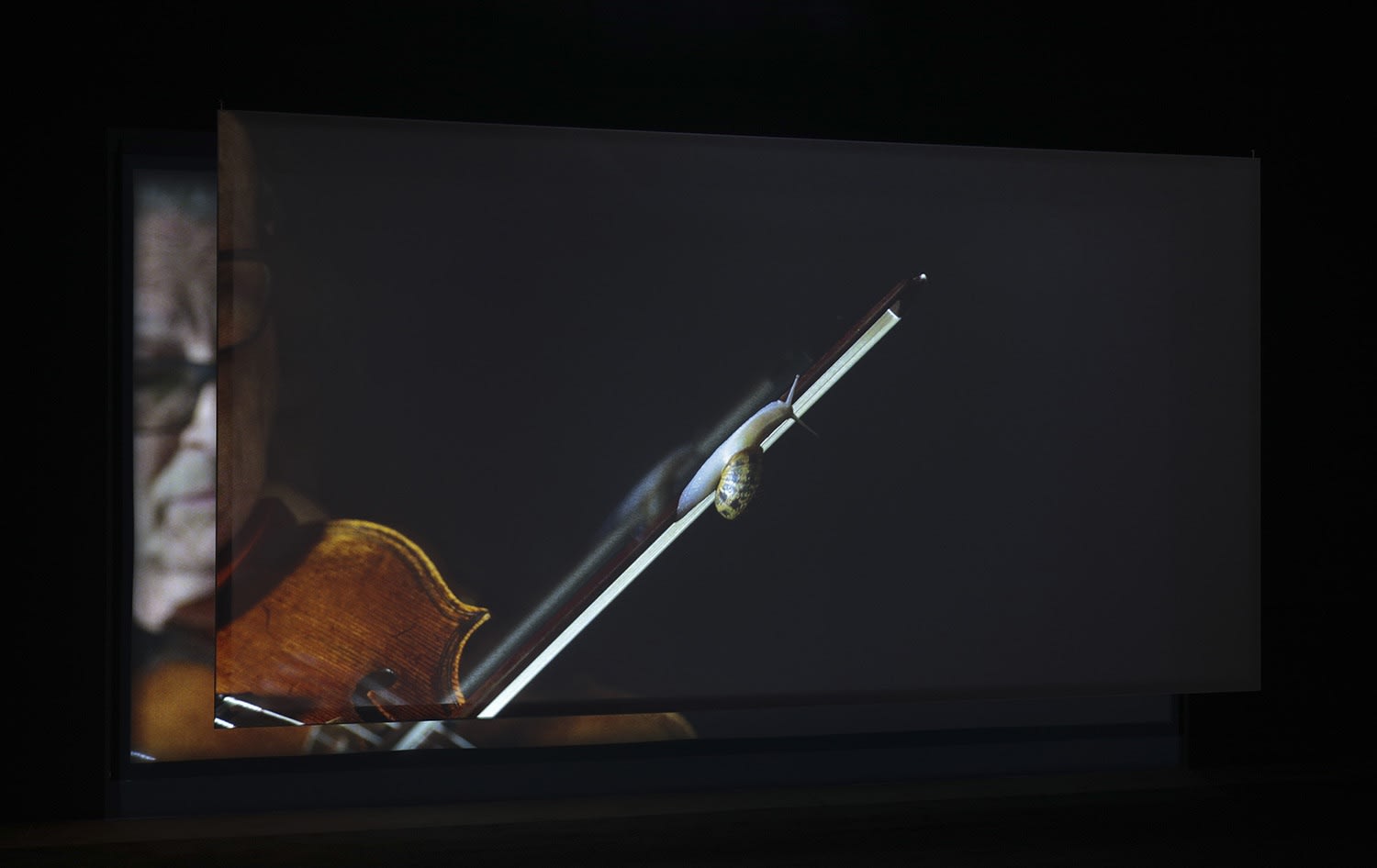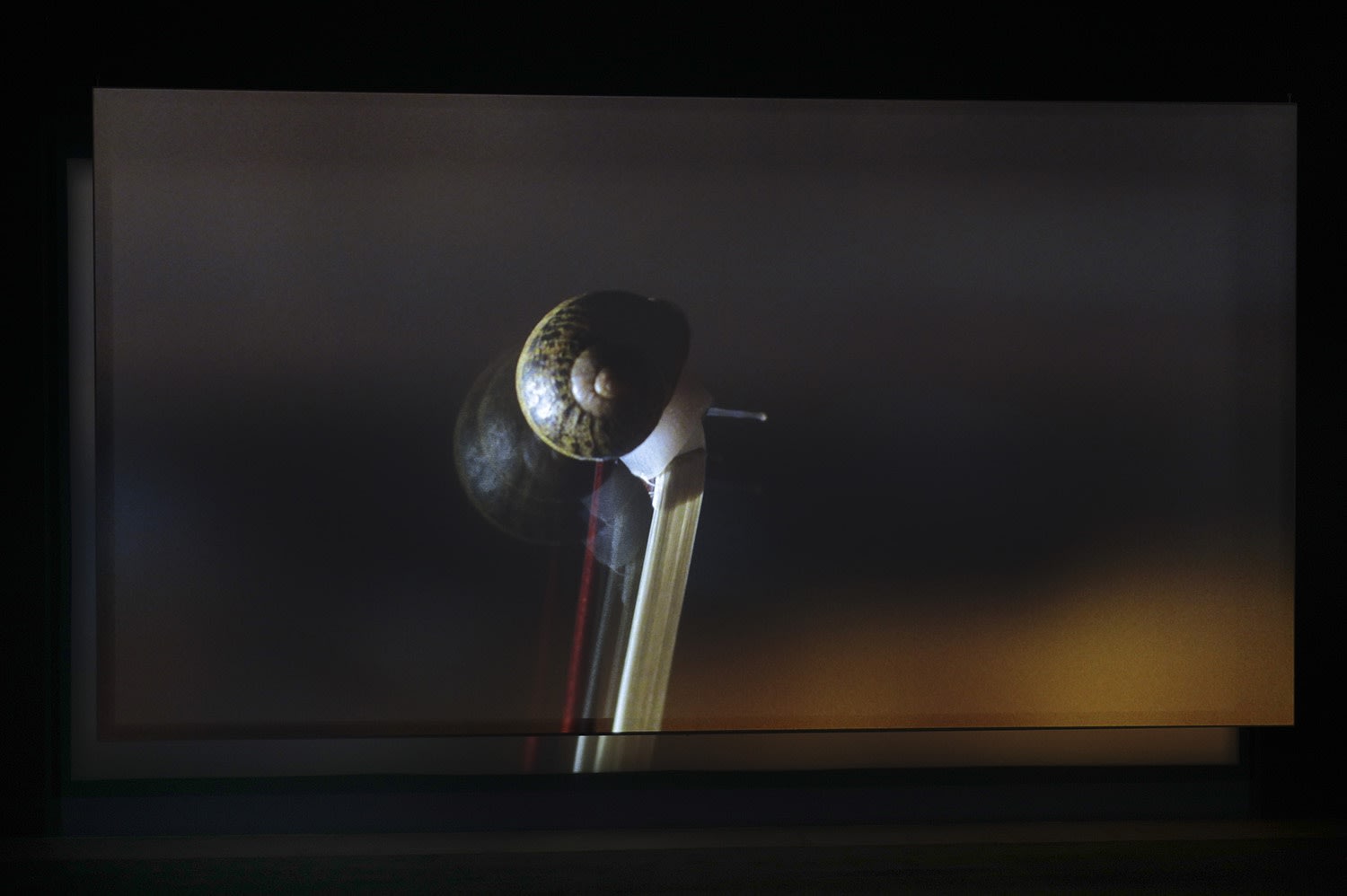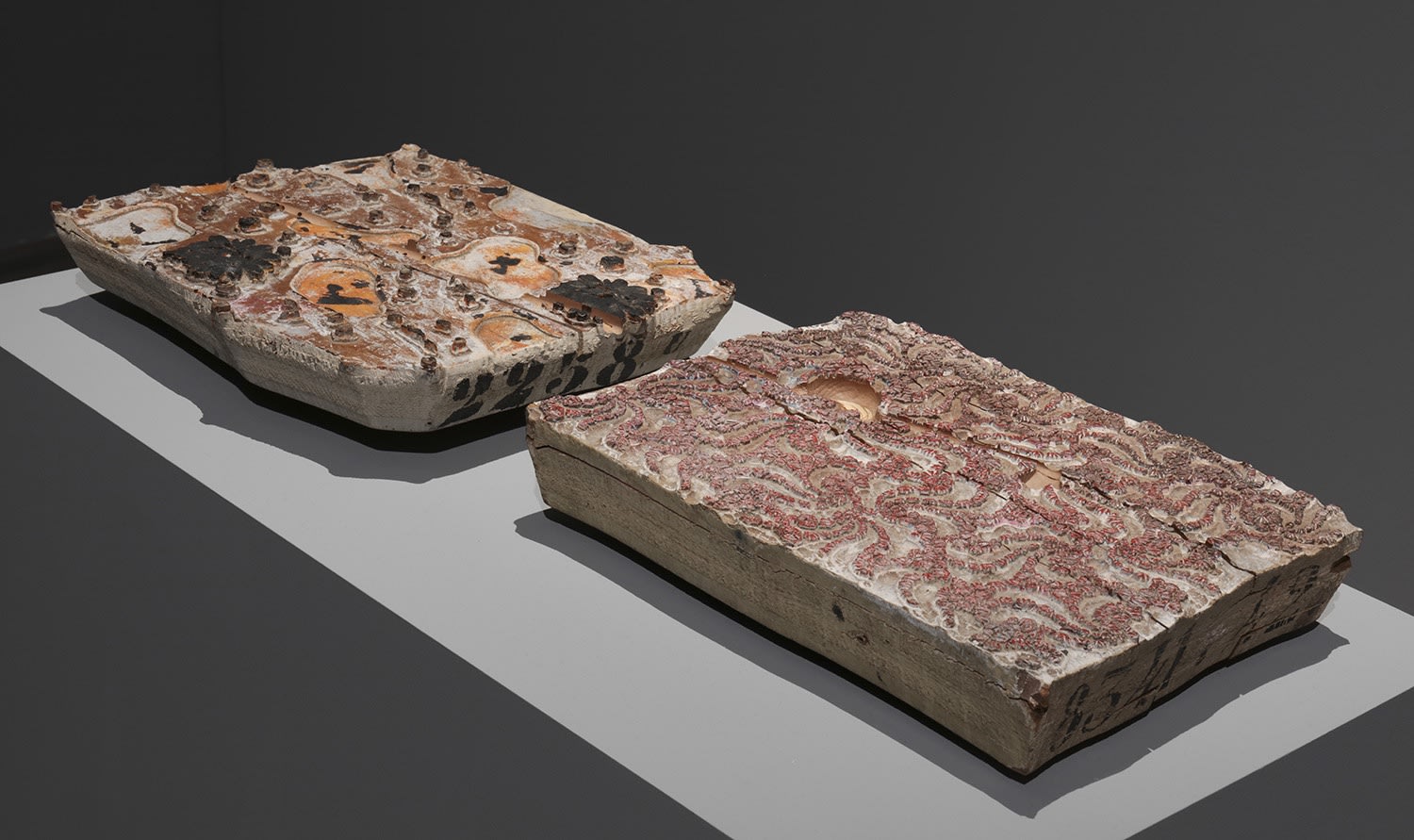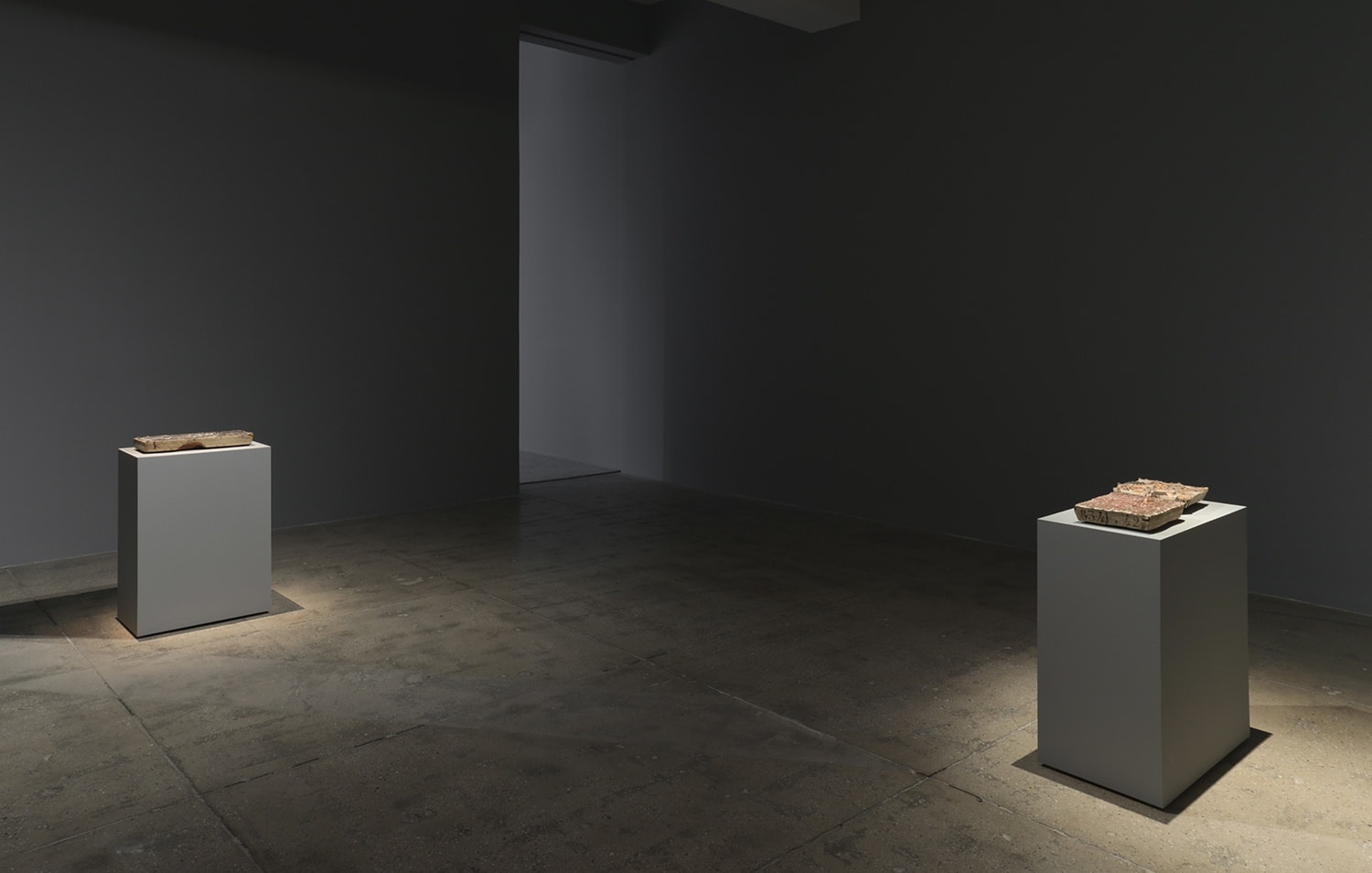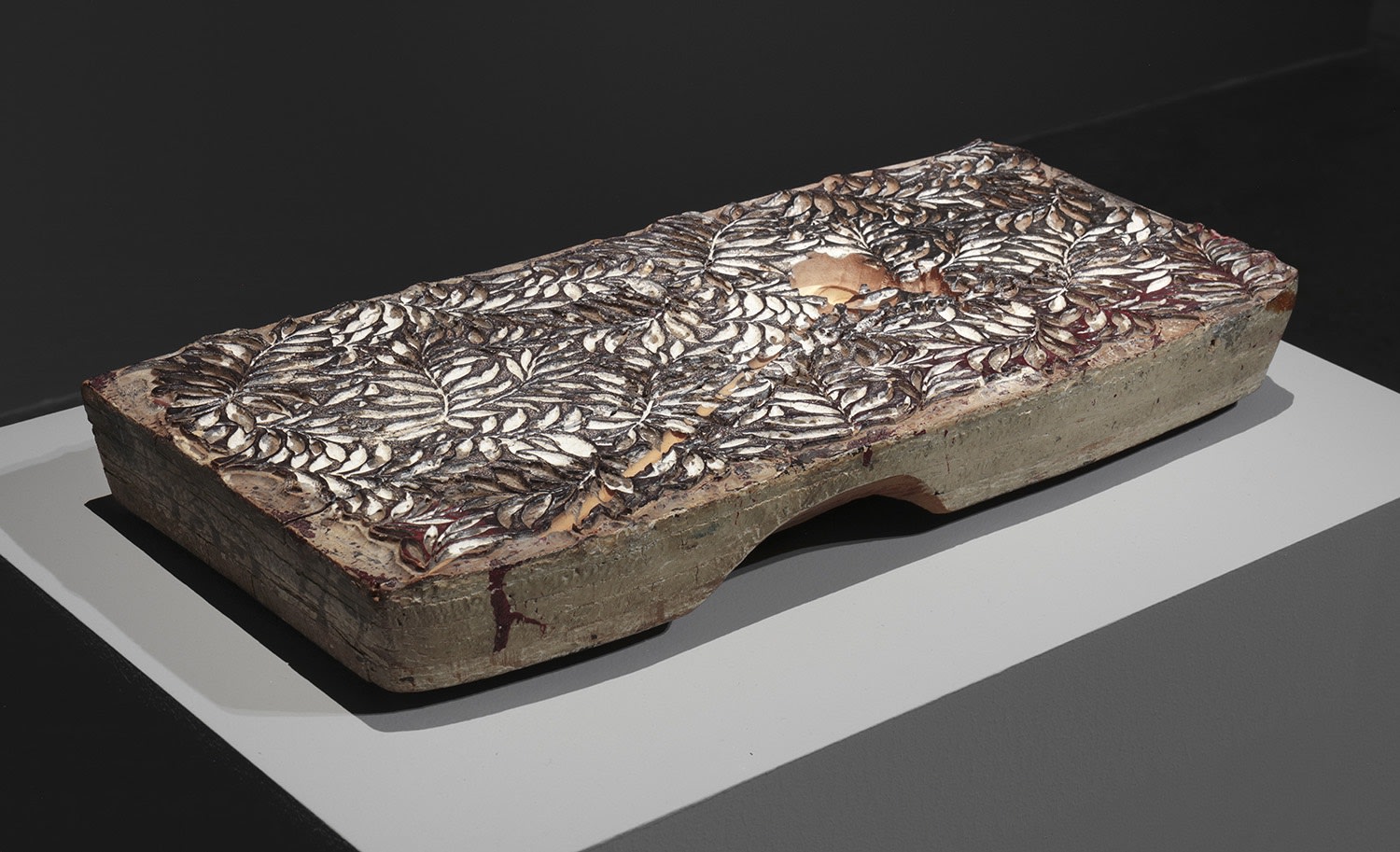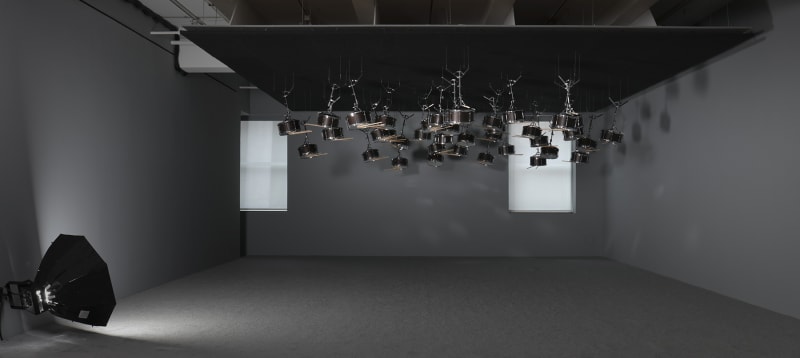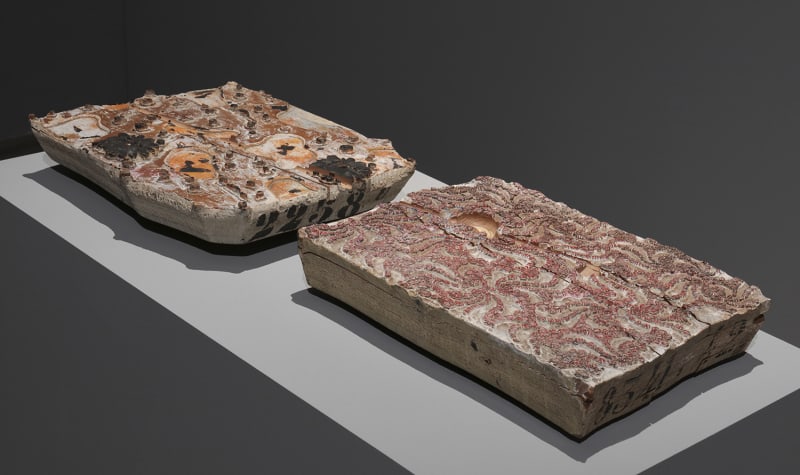Overview
Marian Goodman Gallery is delighted to present a solo exhibition of Anri Sala’s work. Anri Sala’s transformative, time-based works are constructed through multiple relationships between image, architecture and sound, utilizing these as elements to fold, capsize and question experience. His works investigate ruptures in language, syntax, and music in order to validate or invalidate narrative and composition, inviting creative dislocations which generate new interpretations of history, supplanting old fictions with new, less explicit, and less duplicitous ones. For the artist’s fourth solo exhibition at the New York gallery, the first in the city since his celebrated New Museum show of 2016, he presents two substantial new works, both of which will have their US premiere.
Anri Sala
March 2 - April 14, 2018
Opening Reception: Friday, March 2, 6-8 pm
Anri Sala in Conversation with Peter Szendy: Saturday, March 3, 4-6 pm
Marian Goodman Gallery is delighted to present a solo exhibition of Anri Sala’s work, opening Friday, March 2nd, on view through Saturday, April 14th. On March 3, from 4 - 6 pm, Sala will discuss his works and their correlation to classical music with Peter Szendy, a musicologist and professor at Brown University.
Anri Sala’s transformative, time-based works are constructed through multiple relationships between image, architecture and sound, utilizing these as elements to fold, capsize and question experience. His works investigate ruptures in language, syntax, and music in order to validate or invalidate narrative and composition, inviting creative dislocations which generate new interpretations of history, supplanting old fictions with new, less explicit, and less duplicitous ones. For the artist’s fourth solo exhibition at the New York gallery, the first in the city since his celebrated New Museum show of 2016, he presents two substantial new works, both of which will have their US premiere. The Last Resort, a 42-channel sound installation in the North Gallery, features 38 snare drums, loudspeaker parts, drumsticks, and a soundtrack with four speakers. At its core is a performance of the Adagio of Mozart’s Clarinet concerto in A major, conveyed via drums suspended from the gallery ceiling. Sound is generated by movement of the drumsticks in response to vibrations emanating from loudspeakers within each instrument as well as Sala’s multilayered composition on which he collaborated with Olivier Goinard.
Commissioned by Kaldor Public Art Projects and first shown in Sydney in October 2017, The Last Resort is based on a score that was one of the pivotal musical creations of the Enlightenment – a time when European nations were rethinking the constructs of politics and science. As Sala explains, “I had at the back of my mind the rift and the ensuing contradiction between the departure point of some remarkable principles of the Enlightenment—such as tolerance and a non-judgmental acceptance of the other—and their fallouts on arrival, exacerbating prejudices, which in turn caused untold devastation and loss.” The score, written close to Mozart’s death in 1791, three years after the First Fleet landed in Botany Bay and just prior to the English colonization of Australia, was created for the clarinet. Then a new instrument, the clarinet was thought to ‘elevate the art form.’ Sala elucidates that his “intention was to subvert Mozart’s Clarinet Concerto, its flow as a whole, its gravity and its pace, in order to produce the perception of a concert that has travelled a long distance, endured the high seas of a journey, making it to another shore, although not necessarily in the original form intended by its creator. Thus, my aim was to compose with corruption – a time-based phenomenon—while underscoring its disrupting power.” To encapsulate this sense of journeying into his work, Sala incorporated the notes of James Bell into his revision of the concerto. Bell, a passenger on a ship from London to Adelaide in 1838, copiously marked the changes in wind into his journal, which were used to replace the original tempo indications of Mozart, stretching or compressing them accordingly.
Sala wanted to imagine how a fictional journey through the winds, the waves, and the water currents of the high seas would affect a musical masterpiece of the age of Enlightenment; what would become of Mozart’s Clarinet concerto if it were to float and drift like a message in a bottle. Now this most universal of his major works will reach another shore, one that has seen its own colonial legacy. The Last Resort’s layers and resonances are redoubled in their poignance and significance.
In the South Gallery, Sala’s new film, If and Only If (2018), based on Igor Stravinsky’s Elegy for Solo Viola, also charts the course of a journey, which too becomes an integral part of its musical composition. In this case, a snail gradually travels the full length of a viola bow, innocuously moving across it, but minutely disrupting the exquisite balance on which the maestro’s playing instinctively relies. This traversal emulates a concealed dialogue between two voices that is subtly implied at the heart of the composition. The work is performed as a monologue, but it is in an allusion to dialogue, in the form of the sound of two strings, that Sala renders Stravinsky’s Elegy as a tactile interaction between the renowned violist Gérard Caussé and a garden snail.
The snail, its location and pace imposing itself on the performance, causes the viola player to simultaneously make adjustments for and thus compose with this evolving situation. The standard duration of Elegy is thus subverted through the interaction between the musician and the snail, revised to almost double its usual time. When the snail slows down, hesitating to move forward, Caussé adapts the Elegy to encourage the snail to carry on. The music becomes an organic composition and a mutual effort, created by the performance of the violist and action of the snail, resulting in a soundtrack to the snail’s ‘epic voyage.’ Whilst filming and editing If and Only If, Sala worked on a corresponding series of sculptures he carved into vintage wooden plates used for printing textiles in 18th Century France. Sala wanted his “contemporary film stills to find their volume” in timeworn objects, so, like an instant of the footage becoming fossilized, a snail and a viola bow are milled down directly into the wooden plates, disrupting their decorative patterns. As the printing plates were made in layers of progressively softer woods, Sala’s interventions are like boring through stratum of history, reiterating that what fossils and film-stills have in common is that they’re the physical incarnation of performative acts, lived lives. The sense that the carved images of the snails and bows originated from a time-based media is present in each object: in If and Only If (pair), the background has developed from one pattern to another but the bow is continuous, indicating a journey from one locale to another; whereas in If and Only If (stereo),the snail appears duplicated, as a fossilized echo of itself. The artist wishes to credit and give thanks to his collaborators: Liria Bégéja, executive producer of The Last Resort and If and Only If and Münchener Kammerorchester (MKO) and Robert Schneider for their collaboration in The Last Resort.
Anri Sala was born in 1974 in Tirana, Albania, and lives and works in Berlin. Recent solo shows include The Present Moment, Instituto Moreira Salles, Sao Paulo, Brazil; (2017-2018); Museo Tamayo, Mexico City (2017); The Last Resort, Kaldor Public Art Projects, Sydney, Australia (2017); Answer Me, The New Museum (2016); The Present Moment, Instituto Moreira Salles, Rio de Janeiro (2016); Teshima Seawall House, Benesse Art Site Naoshima, Teshima Island, Japan (2016); Haus der Kunst, Munich (2014); the French Pavilion at the 55th Venice Biennale (2013); the Centre Georges Pompidou, Paris (2012); The Serpentine Gallery, London (2011); The Contemporary Arts Center, Cincinnati (2009); The Museum of Contemporary Art, North Miami (2008); and the Fondazione Nicola Trussardi, Milan (2005); among other venues. Sala has received the Vincent Award (2014), the 10th Benesse Prize (2013), the Absolut Art Award (2011), and the Young Artist Prize at the Venice Biennale (2001). He has taken part in many group exhibitions and biennials, including the 57th and most recent Venice Biennale (2017), the 12th Havana Biennial (2015), the Sharjah Biennial 11 (2013), the 9th Gwangju Biennale (2012), documenta (13) (2012), the 29th São Paulo Biennial (2010), the 2nd Moscow International Biennale of Contemporary Art (2007), and the 4th Berlin Biennial (2006). The Last Resort will be shown at The Garage in Moscow, opening in late September 2018.
Please join us at the gallery at the opening reception for the artist on Friday, March 2, from 6-8 pm.
For further information, please visit www.mariangoodman.com or contact Linda Pellegrini, Director of Communications at: linda@mariangoodman.com or 212 977 7160. The gallery is open Monday–Saturday, from 10 am – 6 pm.
